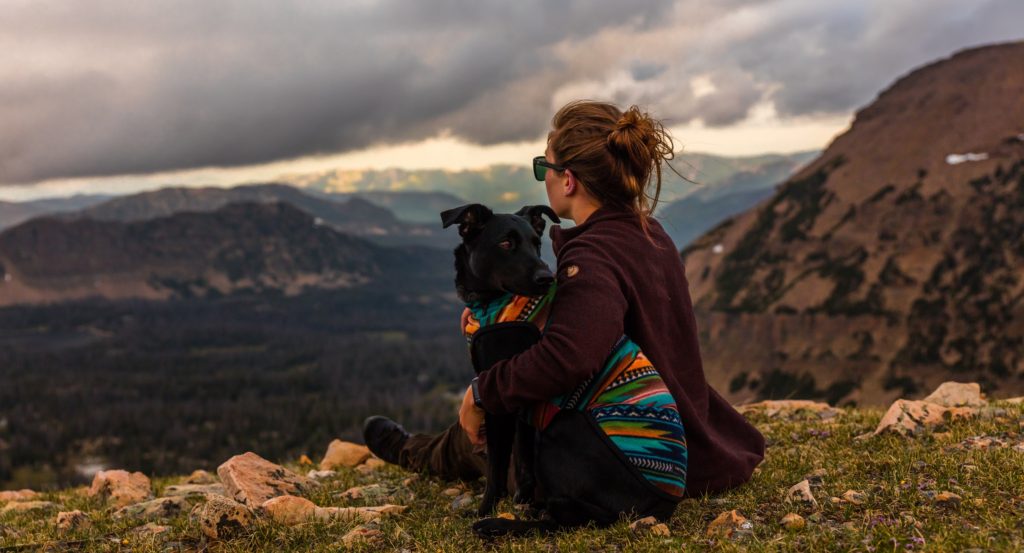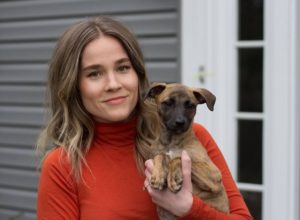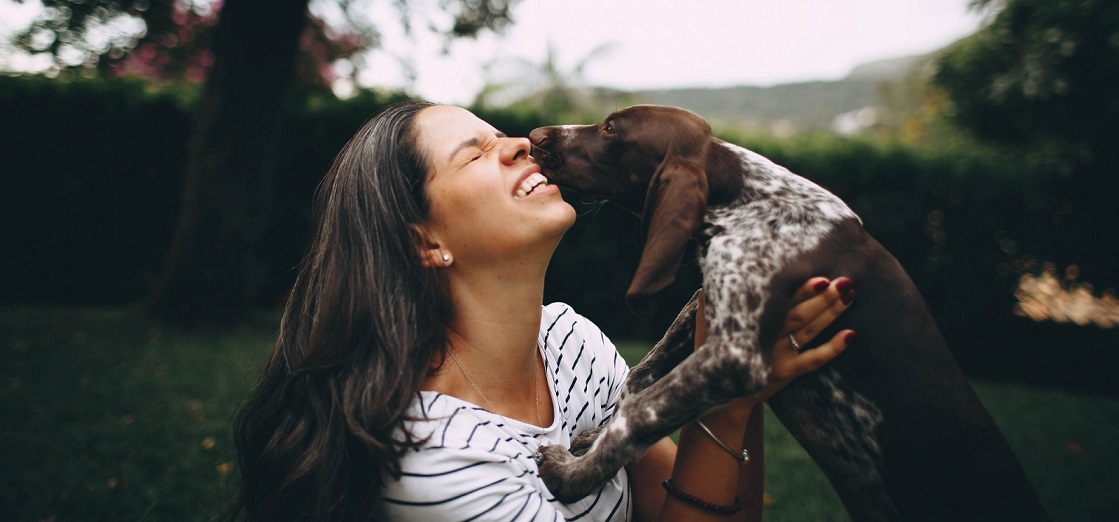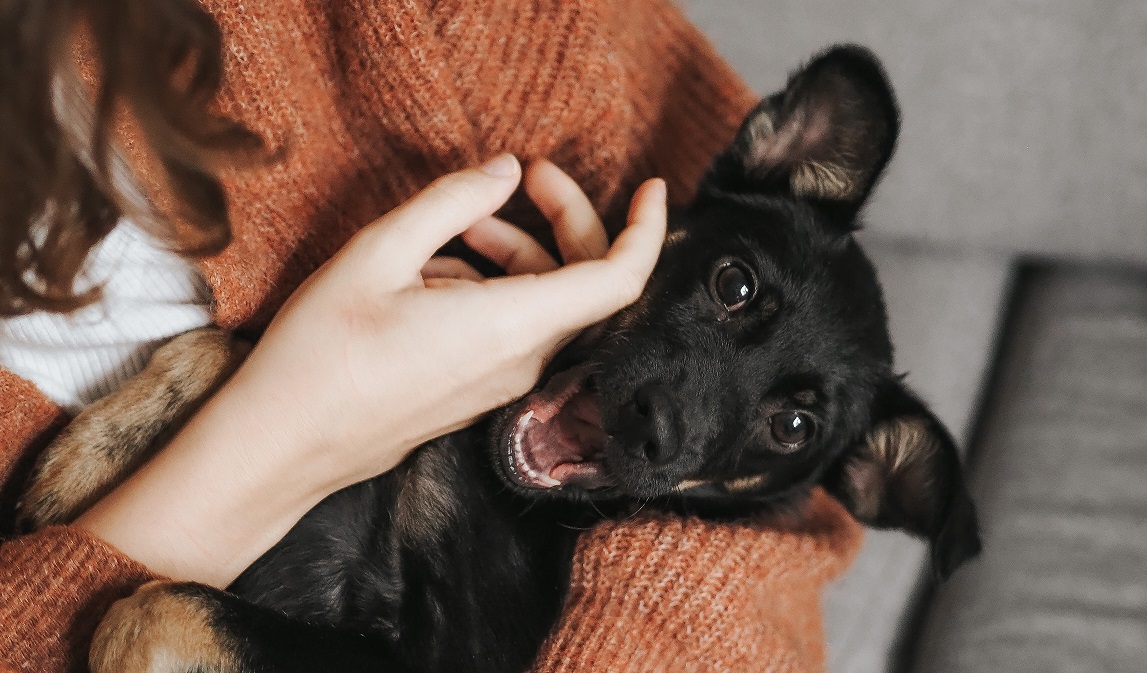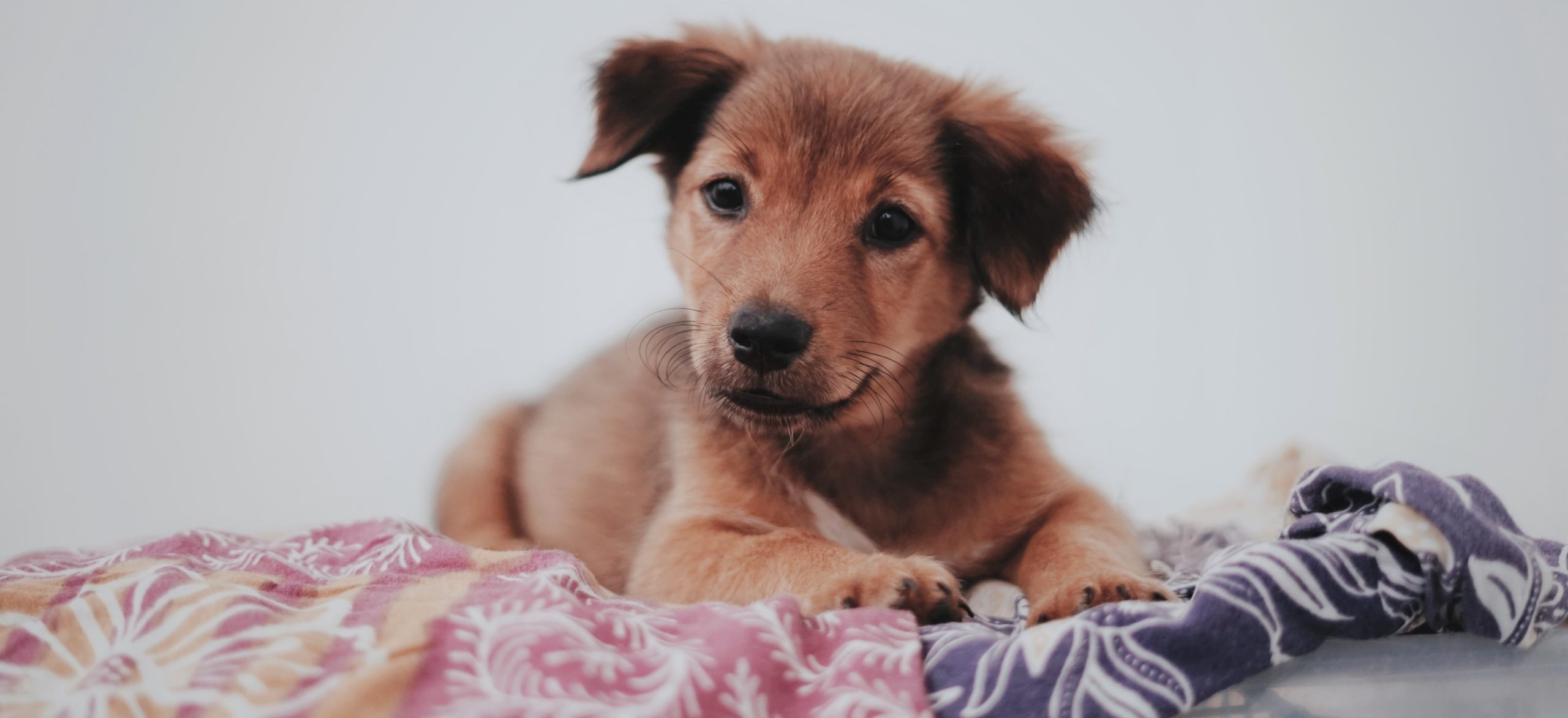Want to raise your puppy to be an awesome adventure sidekick? Do you dream of enjoyable outdoor adventures, road trips, or public outings with a confident, well-behaved pup?
Strategically socializing your puppy is the most important thing you can do to prepare them for a lifetime of fun adventures together.
I’ve put together this list of 10 important socialization experiences to help you get a practical sense of how to raise a well-adjusted adventure pup.

Socialization is Key to Raising an Awesome Adventure Puppy
Before we get into which socialization experiences to consider for your puppy, let’s talk about why socialization is so important to raising a pup who can be an enjoyable adventure buddy.
Socialization is the process of exposing a puppy to the sights, sounds, surfaces, environments, and experiences they will encounter during their life, in a manner that helps them feel safe and boosts their confidence.
It’s all about preparing your puppy for life with you, by teaching them how to act and feel in all the different situations they will be in as an adult dog.
Adventures are a lot more fun and fulfilling when your dog is confident and well-behaved. Socialization can help shape a well-adjusted puppy who takes on new experiences with ease.
Socialization can help prevent fearfulness, anxiety, nervousness, reactivity, overexcitement, and even aggression, which can be more likely in dogs who were undersocialized as puppies. These behavior concerns can make adventures a lot more challenging, for both you and your pup.
When you expose your puppy to novel stuff from an early age in a positive way, it becomes no big deal.
The world and all its novelty become normalized, resulting in a happier, calmer, more confident puppy who is better prepared for all your fun adventures.

Socialization is More Than Being Social
Because “socialization” contains the word “social,” it’s easy to think that puppy socialization is all about your puppy meeting people and other dogs. And while that may be part of it, good socialization goes way beyond meeting strangers and playing with dog friends.
Think of socialization as exposure to novelty. This might involve interacting with the new thing, or it might involve simple observation at a distance that feels comfortable to your puppy. Sights, sounds, smells, surfaces, and experiences that your puppy will experience as an adult dog should all be a part of puppy socialization.
Additionally, this exposure should ideally produce neutral or positive feelings within your puppy. It’s not enough to just expose them to these things, you want it to be a good experience. Avoid things or situations that may scare or stress out your puppy, as this is counterproductive to building their confidence. Bring along treats and toys to make the outing enjoyable.
Your puppy’s body language gives you insight into how they’re feeling during socialization outings. When you know what signals indicate discomfort or fear, you can take action to help your puppy feel better. Check out this illustrated resource from Dr. Sophia Yin to learn what body language signs to look for.
And finally, your puppy should set the pace during socialization experiences. Let them check out stuff at their own speed and from the distance they choose, rather than dragging or luring them toward it, or otherwise forcing an interaction. This will help ensure your puppy feels safe and comfortable.
When socialization is approached in this way, it has the potential to positively affect your puppy’s behavior and temperament in ways that last a lifetime. It’s that powerful!
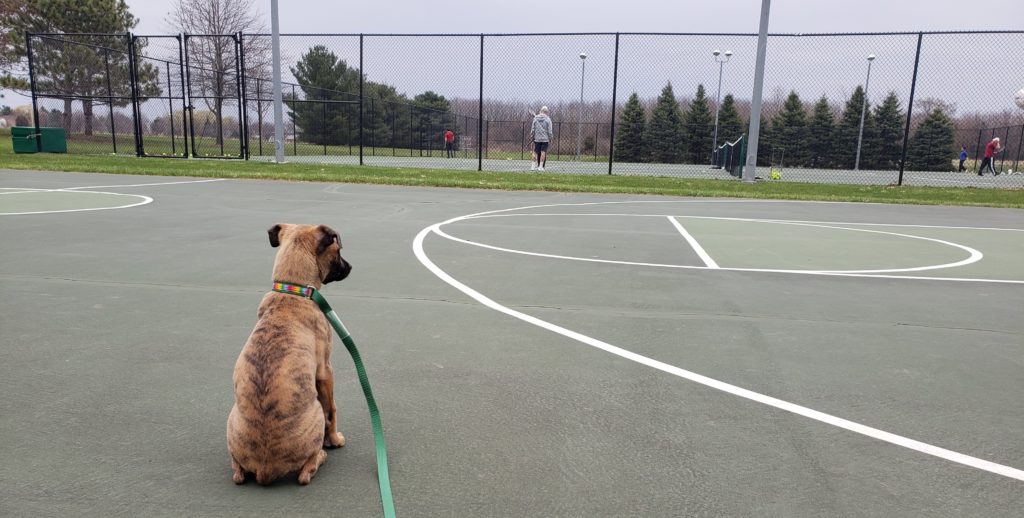
“But My Puppy Isn’t Fully Vaccinated Yet!”
It’s completely valid to be concerned about your puppy’s health, especially before they’ve completed their vaccination series.
You might think it’s better to put off socialization until they’re fully vaccinated, but that is a big mistake, and here’s why.
The critical socialization period for puppies ends around 16 weeks of age. During this time, their brains are sponges, and they are more accepting of novel objects and experiences. It’s much easier for them to acclimate to novelty and grow in confidence, and this sets them up for success as your adventure companion.
Past 16 weeks, puppies become more suspicious and nervous about things they haven’t been exposed to previously. Most pups complete their vaccinations around 16 weeks of age. So if you wait until then to get them out and about, you’ve missed out on the chance to bring out the best in your puppy through socialization.
Dogs who don’t receive proper socialization before 16 weeks may become fearful of random items, unfamiliar people or dogs, or new environments. And that fearfulness makes adventures harder.
Keeping your puppy home until they’re fully vaccinated does keep them more protected from illness, but it also puts them at risk of developing behavior issues from a lack of socialization. The American Veterinary Society of Animal Behavior (AVSAB) has a statement on puppy socialization to help owners find a balance between safety and socialization.
AVSAB states that “it should be the standard of care for puppies to receive […] socialization before they are fully vaccinated.”
They also detail the risks of postponing socialization until after vaccines are completed:
“Behavioral problems are the greatest threat to the owner-dog bond. In fact, behavioral problems are the number one cause of relinquishment to shelters. Behavioral issues, not infectious diseases, are the number one cause of death for dogs under three years of age.”
Every puppy parent will have their own level of comfort when it comes to the potential health risks of getting your puppy out in the world versus the potential behavioral risks of keeping your puppy at home.
As a trainer and dog person, I personally feel the benefits of socialization offset the risks, and I aim to make the most of the critical socialization window by taking my puppy out and about as much as they feel comfortable with.
But this doesn’t mean bringing them anywhere and everywhere willy-nilly. It’s best to avoid areas with heavy dog traffic, like pet stores or crowded walking paths, until they’re fully vaccinated.
There are also additional safety precautions you can take to minimize health risks, while still getting your puppy into the world. Here are just a couple of ideas:
- Chill on a large blanket. This keeps your puppy off the ground while allowing them to take in different environments.
- Use a stroller. I know, I know. Pushing a puppy in a stroller might seem odd, but it’s better than keeping them at home until they’re fully vaccinated.
- Sit in your car. With your puppy on your lap, next to you on a leash, or in their crate, watch the world go by through an open door or hatch.
The bottom line is that socialization is just too important to put off, especially if you want to raise a well-rounded adventure companion. Socializing your puppy before they reach 16 weeks of age will help set you both up for more success on future adventures.

1. Car Travel
Whether it’s a road trip or just a short drive to a local trail or coffee shop, adventures are much easier when your puppy is calm and comfortable riding in your vehicle. Making the car a good experience from an early age can help prevent fear of car rides.
Pups who are nervous about riding in your vehicle might resist getting inside, which can really be an ordeal as they start to get bigger. And once they’re in, they might shake, drool, vocalize, pant, or freeze up. This can make car travel stressful for both of you.
For the safety of both you and your puppy, I recommend having them ride in a crate or car seat while you’re driving.
Here are some tips that can help your puppy learn that the car is a great place to chill out:
- Don’t let all your puppy’s early vehicle experiences be vet visits. This is a common mistake made by puppy parents, as puppies require frequent appointments to complete their vaccinations. This can quickly create a negative association with the car, as rides seem to always end with needle pokes from a manhandling stranger.
- Add in plenty of fun or neutral car rides. Drive to places your puppy enjoys, such as the park or a drive-through where they get a special snack. It’s also smart to add in some rides where nothing particularly interesting happens. Maybe you drive around the neighborhood or pick up a prescription and then come home.
- Ensure your puppy isn’t car sick. Puppies can get motion sickness, which can sour the car experience. If your puppy is drooling, throwing up, lethargic, or licking their lips a lot, talk with your vet about medication to alleviate their nausea. A car-sick puppy can quickly turn into a puppy who hates the car, so it’s best to get this addressed right away.
2. Natural Spaces
If you got your puppy with the hopes of an outdoor adventure companion, you’ll want to expose them to natural spaces early on. This can help familiarize them with the sights, sounds, and smells so they are more likely to be confident and able to focus on you while out on adventures.
The type of spaces you take your pup to will depend on where you live and your preferences. Forests, open fields, prairies, or desert trails could all be good options.
Visit both uncrowded and crowded natural locations. The uncrowded places offer opportunities to practice off-leash skills and enjoy some peace and quiet. More crowded spots show your puppy that people and other dogs do exist in these types of places. If you only frequent spaces where you’re the only ones around, your puppy might be alarmed when someone inevitably appears on the trail.
A non-restrictive harness and biothane long line offer your pup more space to safely explore. I love a twenty-foot line for puppies.

3. Water
Some puppies are born with an innate love of water. Take them to a lake or set up a kiddy pool and they jump in.
Other pups need gradual exposure to water to learn that it’s safe and fun.
No matter your puppy’s baseline level of comfort with water, getting them in and around water in ways that feel safe and fun can help build their confidence.
Puppies should be free to check out water at their own pace, rather than pulling or placing them in it. Shallow water, such as the shore of a pond, lake or creek, is an ideal way to introduce your puppy to water.
Backyard Ramblers has a very thorough guide on kayaking and canoeing with dogs, with detailed information to help build your puppy’s confidence with these water activities. If you dream of enjoying a paddle with your pup, this is a great resource to get you started.

4. People
Whether you’ll be camping, road tripping, hiking, or enjoying a coffee on a dog-friendly patio, people are an inevitable part of adventuring with a canine companion. Thoughtfully exposing your puppy to humans from an early age can help them learn that people are neither scary nor overexciting.
When thinking about socializing a puppy to humans, it’s important to include both interactive and passive socialization.
Interactive socialization is what people think of most often when they hear the word “socialization”: meeting and interacting with new people. As with all socialization, this should be done at the puppy’s pace. Ideally, your puppy can meet a variety of respectful humans from different ages, genders, and appearances.
Some pups are naturally outgoing and meeting a group of neighborhood kids is the best thing ever. For other pups, that situation might be overwhelming and scary. Because puppies are so impressionable, aim to facilitate experiences with people that will be positive, and not stressful. It’s okay to tell someone that they can’t pet your puppy if you don’t think your pup will like it.
Passive socialization means your puppy observes people, but doesn’t directly interact with them. This helps shape realistic expectations for your puppy, as the majority of people they encounter in their lifetime will simply pass on by without stopping to gush over them.
A balance of interactive and passive socialization can foster calmness and confidence around people. This will make your future adventures more enjoyable.
5. Other Dogs
The world is also full of dogs, and an active life with your pup is easier when they can handle themselves around other canines.
Just like with people, a mix of interactive and passive socialization is ideal when it comes to other dogs.
I like to introduce my puppies to vaccinated dogs that I know and trust, rather than letting them meet random dogs we encounter in public. This makes it more likely that my puppy’s early experiences with other dogs are positive, and not scary.
Balance playtime and interaction with passive socialization where your pup can observe other dogs from a distance. Again, this helps your puppy learn that just because they see another dog, it doesn’t mean it’s time to play.

6. Indoor Locations
Public pet-friendly locations offer a convenient opportunity to expose your puppy to a variety of people, sounds, sights, and surfaces. Additionally, just being in an indoor space that’s not your home is a whole experience in itself.
It can be a lot of fun to bring your dog along for errands in dog-friendly shops, and exposing your puppy to these places from a young age can help them be confident and well-adjusted.
I prefer to take puppies who aren’t fully vaccinated to shops that aren’t pet stores, such as gardening centers or bookstores. These places tend to attract far fewer dogs, which means less risk of germs.
Always call a store before taking your puppy, as store policies can vary.
Remember, you want these experiences to be comfortable for your puppy, so pay attention to how they’re feeling while you’re inside a store. If they look scared or overwhelmed, it’s okay to leave or take a break outside. Some stores might be louder and more chaotic than others, so you may want to start with a quiet, uncrowded place first to see how your puppy does.
Here are a few stores that tend to be dog-friendly:
- Cabela’s/Bass Pro Shops
- Home Depot
- Half Price Books
- Joann Fabrics
- Tractor Supply
- Blain’s Farm and Fleet
- Lowes
- TJ Maxx/Marshalls/Home Goods
- Old Navy

7. Other Homes
Once your puppy has acclimated to your home environment, it can be beneficial to expose them to other people’s homes. Adventures often entail staying at a home away from home, whether that’s a friend or family member’s place or a vacation rental, such as an Airbnb or VRBO.
Getting your puppy used to interior living spaces from a young age will set them up for success on future overnight adventures.
Ask a friend or family member if you can bring your puppy over for some positive exposure.
I also highly recommend doing a mini vacation at an Airbnb or VRBO to acclimate your pup to the experience of traveling and staying in a place away from home. Check out my Guide to Successful Airbnb Stays with Your Puppy for loads of tips and tricks.
8. Camping Gear
If camping is on your list of things you dream of doing with your dog, you’ll want to expose your puppy to camping elements. This will help normalize camping gear, so your puppy isn’t scared or stressed out when they tag along for camping adventures in the future.
Set up your tent in the backyard or living room. You can even spend a night in there together!
Pound some tent stakes into the ground at a distance, to expose your puppy to the sound of a mallet.
Get a bonfire going and keep your puppy on a leash at a safe distance to help them learn safe behavior around fire.
Think about all the aspects of camping and how you can expose your puppy to them in safe, positive ways.
9. Bridges
This might seem like an oddly specific thing to add to your socialization list. But if you have a dog who is terrified of walking over bridges, it can limit your adventures. Many cool outdoor locations involve bridges and it’s no fun to try to coax a scared dog across or miss out altogether because your pup refuses to move.
Getting your puppy comfortable with moving on bridges when they’re babies can prevent a fear of bridges from developing. If possible, start with short bridges that are fairly low to the ground, and when that’s going well, advance to longer and higher ones.
10. Other Animals
Depending on where you live, or where you plan to adventure, you may encounter other types of animals while out and about.
My dogs and I frequently see horses while out hiking the local trails. Occasionally we pass by cattle and sheep.
Exposing your puppy to other species can help them learn to be calm when in the presence of animals. Remember that your puppy doesn’t need to interact with these creatures. Passive socialization is the way to go, as the goal is relaxed coexistence, not nose-to-nose interaction.
Seek out places where your pup can observe animals from a distance, and move closer only when your puppy shows they are comfortable. Always keep in mind the safety and comfort of the other animals as well, using a leash to ensure your puppy doesn’t get too close.
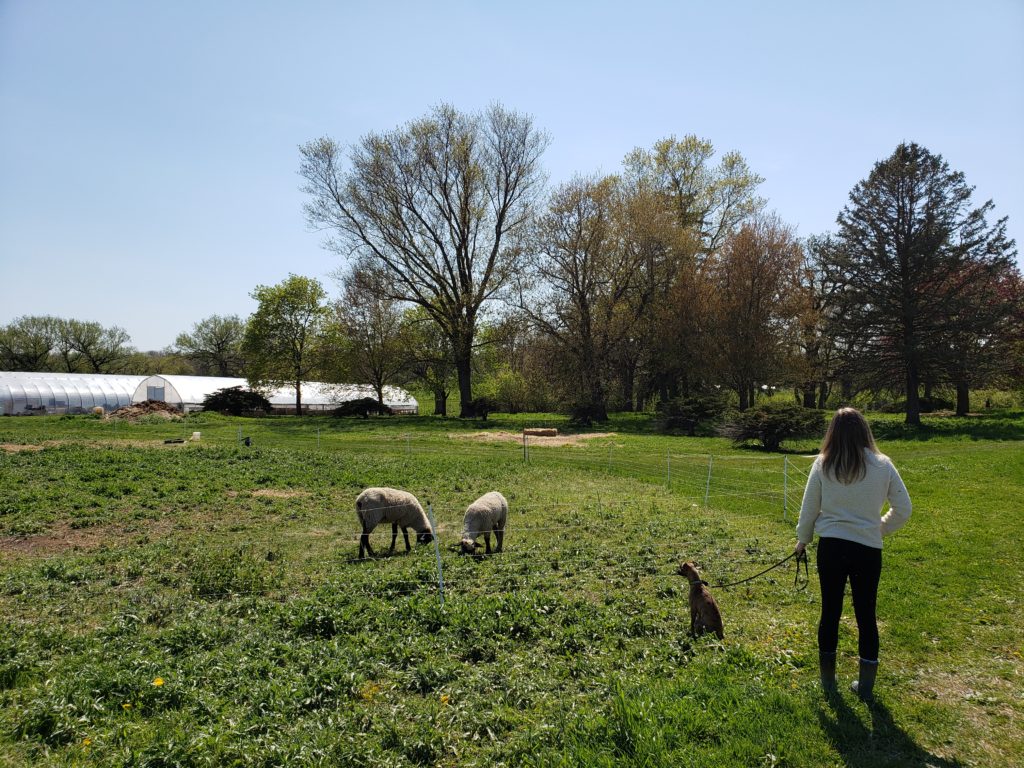
Socialization Is Not a One-Size-Fits-All Thing
Every puppy is a unique individual. The socialization experiences you provide your puppy need to be tailored to their temperament, and to the lifestyle and activities they will be a part of in the future.
This list is to help get your brain thinking of things and experiences that may be beneficial to expose your puppy to in positive ways. But it’s not an exhaustive or prescriptive list.
Perhaps you would love your pup to travel on planes with you or to accompany you on biking adventures. You can add elements of these activities to your socialization plan, to better prepare your puppy for success.
If you’ve got a puppy, or are getting one soon, and envision life with a dog who can be your adventure buddy, my puppy program is designed to help you achieve those goals. I help people with puppies build the skills they need to grow into a well-adjusted, confident companion both at home and out in the big wide world.
The Peak Puppy Potential Program is for dedicated people with puppies between two and four months of age who want to feel confident in raising, training and socializing a puppy who can be an enjoyable part of a fun, active life together.
I can help you create a customized socialization plan, and learn how to properly expose your pup to the big wide world, so that they grow into a confident, well-behaved adventure buddy.
In-person services are available for clients in the northwest Chicago suburbs, and virtual services are available worldwide.
Schedule a free introductory call to find out more about how the program can help your puppy reach their full potential.

